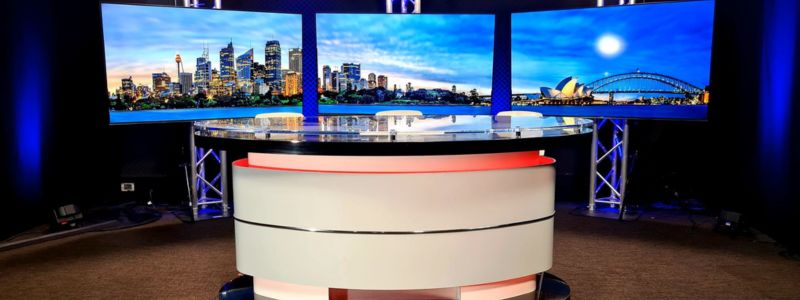Media training in a working TV studio or boardroom
Media training teaches you the skills and techniques to be a clear and concise spokesperson and to present with confidence.
Whether it takes place in a working TV studio or boardroom, media training is important for anyone – CEO, executive, or spokesperson – required to speak publicly to help promote their business or organisation.

Access to a working TV studio
While there are many advantages to conducting training in an office space where you feel comfortable, unlocking access to a working TV studio can take your training to a whole new level.
It gives you an inside understanding of how television works, the studio layout, and the challenges you may face if you are invited to an ‘in studio’ interview for live TV shows such as Sunrise, Today, The Project, or Sky News Australia.
As well as offering great on-site experience, it is also a great opportunity to test your presentation skills in as close to the “real thing” setting as possible.
‘In studio’ media training
A working TV studio is a highly technical set up, with microphones, professional lighting, autocue stands, backdrop screens, multiple power leads, several cameras, and an imposing-sized desk.
For the media novice, it may appear overwhelming, but media training can help demystify the studio, ensuring you feel confident enough to say “yes” if offered an in-studio interview.
Training under bright lights
With the bright lights and frenetic nature of a TV studio, it is easy to get distracted from your key messaging. It is important to know where to look, maintain excellent posture, actively listen to questions, and answer questions as succinctly as possible.
If you’re sitting at the same desk or couch as the host interviewing you, most commonly, you will speak directly to them so be sure to maintain eye contact.
If you’re being interviewed in a different studio location to the TV host, you need to look straight down the lens of the camera. When you look into the lens, look deep into the camera, not just at the glass at the front. This helps you connect with your audience and helps to stop that ‘deer-in-the-headlights-look’ that you sometimes see.
Lights, camera, action
Being on-camera magnifies everything you do. It is important to maintain your eyeline and not look away or off-camera. This is distracting for your audience, and you don’t want to do anything which detracts from what you have to say.
Staying calm and composed is also important, so try not to fidget or blink excessively, which can sometimes be a challenge under bright lights.
What you wear for a studio TV interview will also be different to what you wear for an outside interview. Block colours are always best. Well-cut suits and jackets present well. Avoid busy patterns, stripes, and checks as these may strobe under a studio camera. Large chunky jewellery should also be avoided as these can be distracting and noisy.
Media training in a boardroom
Media training in the comfort of your company’s boardroom is also useful for personalised coaching and to workshop tailored scenarios for your key spokespeople.
Two senior trainers and a professional TV cameraman with a full-size broadcast camera, audio, and lighting kit simulate a media interview. Feedback during video playback is provided to improve presentation skills and interview techniques.
Key messages are worked through and refined in a safe and familiar environment.
Benefits of media training
Adoni Media has been media training executives around Australia for more than a decade. Adoni’s training sessions are tailored so you and your team learn the skills to successfully conduct interviews for TV, radio, print and online media, as well as gain an understanding of the techniques you can use to manage the media, handle difficult questions, and be crisis ready.
The team at Adoni Media includes former TV and radio journalists who truly understand how the media works and are considered to be Australia’s most experienced media training team.


